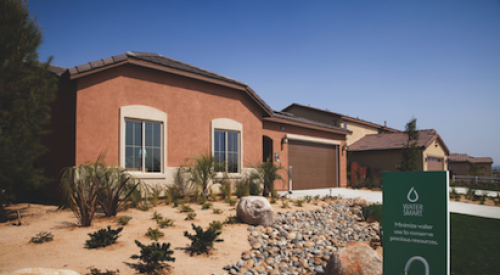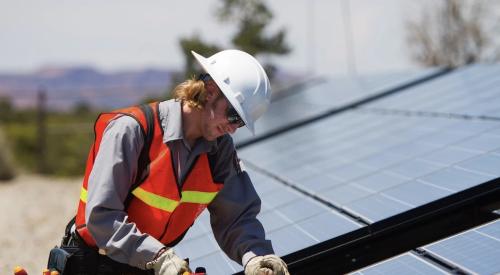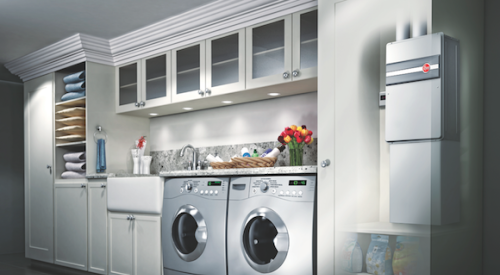| Water heats up as it passes through the copper tubes of the 40-gallon, roof-mounted SunSystems water heater. That warm water is then plumbed directly to the home’s standard gas water heater.
|
Each day more solar energy falls to the Earth than the total amount of energy the planet’s 6.1 billion inhabitants would consume in 27 years. That statistic from the National Renewable Energy Laboratory kind of makes you wonder what we’re missing. Isn’t that kind of like free power?
And yet, builders -- and buyers -- barely even register on the solar power spectrum. It still seems cost prohibitive to both parties, and few buyers are interested enough to spend their amenity dollars on it. Yet in certain areas, namely California, consumers are clamoring for any kind of relief from high energy prices.
Giant Shea Homes San Diego may offer at least a small number of buyers that much-needed relief. Shea is partnering with AstroPower, SunSystems and ConSol to offer solar power generating photovoltaic (PV) cells, solar water heaters and high energy efficiency.
"My intent was to make this the most energy efficient and largest production project that generated its own energy in the United States," says Ryan Green, Community Development Manager for Shea.
Two new home communities within Scripp’s Highlands, located 15 miles north of downtown San Diego, will benefit from the program, with about 280 homes featuring as standard SunSystem’s solar water heaters and energy efficiency exceeding California standards by 30 to 40 percent. One hundred of those homes will include AstroPower’s photovoltaics in their base price.
| Photovoltaics convert sunlight directly into electrical current. AstroPower’s PVs and most on the market today are integrated into roofing materials and are less obtrusive than in the past.
|
In Scripp’s Highlands, PVs will be responsible for generating a fair chunk of the average home’s power, although homes will still be connected to the utility grid. "With the home’s energy efficient features [such as tightly sealed HVAC systems and spectrally selected windows], anywhere from 30-45 percent of the required energy can be generated by the photovoltaics. That’s on a standard home," says Green.
Home prices in Scripp’s Highlands range from the high $400,000s to the high $600,000s, with the inclusion of photovoltaics accounting for $6000 of the base price on the 100 homes. The 40-gallon solar water heater costs around $2200, but Shea will apply for California Energy Commission credits introduced in January to save consumers as much as $750.
If it seems like a lot of money, it is, and Green says consumer response has been mixed. "A lot of people have been very receptive to it, but the challenge is that they don’t know exactly what it’s going to do for them." Short of offering any guarantees, Shea is educating consumers on the savings potential and how outside factors such as weather can affect results. Tom Bohner of SunSystems says that once buyers understand monthly energy savings versus the added cost of installing solar energy devices, and see that a positive cash flow results from using solar, they’re convinced. They may only see a positive cash flow of one dollar, but they benefit -- and so does the environment -- from day one.












